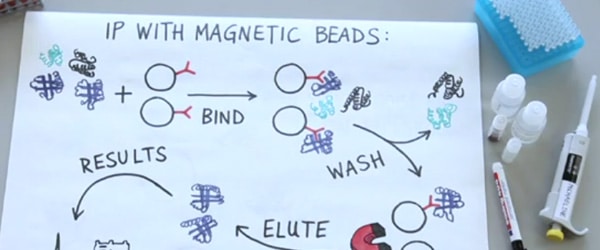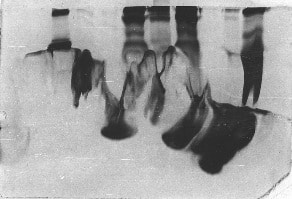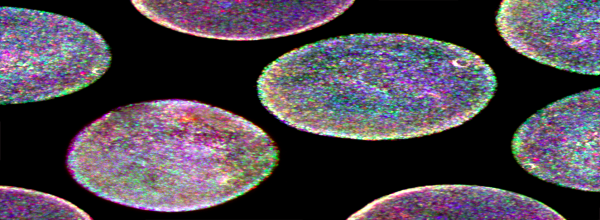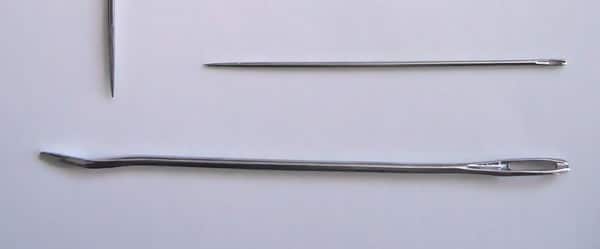One day, a colleague stopped by my workbench to ask which detergent would not break the nuclear membrane. Based on my previous experience using gentle detergents in lysis buffers, I replied, “NP-40”. However, we had two brands of NP-40. A closer look at the datasheets revealed that the chemical names were different even though they used the same acronym.
Would a Detergent by Any Other Name Lyse as Sweet?
I shared my colleagues’ surprised look once we had found that not every NP-40 is alike. But would it make a difference? In general, mammalian cells can be lysed for protein extraction with buffers such as RIPA buffer. Usually, RIPA buffer contains a non-ionic detergent like NP-40 that will separate whole organelles. Other non-ionic detergents available include Triton X-100, Triton X-114, and Tween-20. Depending on the cell type and application, the concentration of detergent that you use (generally 0.1 – 2 %), could result in the cytoplasmic contents and the nuclear contents contaminating each other. If your goal is to detect your favorite protein in a whole cell lysate by Western blot, higher concentrations of detergent are favorable. However, my colleague wanted to conduct subcellular fractionations, specifically nuclear extractions. Preparations of those samples tend to require a much lower concentration of detergent to minimize membrane disruptions in the initial lysis step.
The error in my response to my colleague was that I did not take into full consideration the desired outcome of cell lysis. They wanted to evaluate the localization of the protein, not just to determine the abundance of it in the whole cell. Still…was NP-40 the correct detergent for the job?
It turns out that the acronym “NP-40” can refer to two chemicals of the following IUPAC names:
- Octylphenoxypolyethoxyethanol: street name IGEPAL™
- Nonylphenoxypolyethoxyethanol: street name Tergitol™
It is worth noting that there is only one difference between the two chemicals, which is in the number of alkyl groups (in bold). Despite this, and differences in their street names, both bottles say simply “NP-40”.
What’s in a Name?
After doing research on the origin of the elusive term “NP-40”, I discovered that the current commercially available NP-40 brands are considered substitutes of the discontinued Shell Chemical Company’s Nonidet P-40, which is often abbreviated as NP-40. After the discontinuation of Shell’s Nonidet P-40, other companies like Sigma-Aldrich and PanReac AppliChem started to distribute what are dubbed “Nonidet P-40 substitutes”. Two main trademarked names emerged: IGEPAL™ and Tergitol™. Because IGEPAL and Shell’s Nonidet P-40 have the chemical name of octylphenoxypolyethoxyethanol, IGEPAL is the most chemically similar to the discontinued detergent.
With all of the background knowledge at your arsenal, it’s back to my colleague’s question. Generally, subcellular fractionation will require a detergent concentration of as little as 0.1% Nonidet P-40 (I have seen 0.05 % be reported in publications) and this could be IGEPAL, Tergitol, or any of the other Nonidet P-40 substitutes. So, a better way to answer my colleague’s question would have been to say, “I would recommend starting off with 0.1 % Nonidet P-40.”. I would also recommend documenting the brand of Nonidet P-40 that she decides to use for reproducibility purposes. There are empirical data that note the specific brands. One such publication had taken the time to compare the yields of polymerized tubulin in buffers containing different brands of Nonidet P-40, including the discontinued brand, to determine the detergent potencies. Spoiler alert: the current brands of Nonidet P-40 are more effective in isolating polymerized tubulin than the discontinued brand!
Name Confusion: Blame It on the Chemists!
This anecdote reminded me of another example in which the names of laboratory reagents could boggle the mind. Continuing on the topic of cell lysis, what is the difference between a protease and proteinase? As in the case with “NP-40”, the story behind the term “proteinase” has only led to confusion in the literature. Have you heard of proteinase K? A popular use for proteinase K is in DNA extraction. Why is not called protease K? According to a 1986 letter from Biochemical Journal, “protease” is a broader term for the cleavage of the peptide bonds, which make up the backbone of proteins. However, proteases can cleave short secondary structures/peptides as well as tertiary structures/proteins (think Biochemistry 101). Therefore, the term “proteinase” emerged as a way to identify a protease that cleaves tertiary-structured proteins. However, present-day laboratories tend to talk about proteases with the exception of, for example, proteinase K. You would be correct if you said “protease K”, but then you may have difficulty finding it in any inventory.
So, will the real NP-40 stand up? Looks like Eminem would be looking for either the discontinued Shell Chemical Company brand of Nonidet P-40 or IGEPAL. However, for your specific application, it would be worth gathering more empirical data on the brand of NP-40 that you would like to use. Personally, I would prefer “NP-40” to be eliminated from our vocabulary to be replaced by the rightful “Nonidet P-40”, but here we are – “tomato” or “toMAto”, I guess!
References:
- Sinka S, Field JJ, Miller JH (2017). Use of substitute Nonidet P-40 nonionic detergents in intracellular tubulin polymerization assays for screening microtubule targeting agents. Cell Biol. 95: 379-384.
- S. Department of Agriculture (2015). Nonphenyl Ethoxylates. Washington, D.C.: Pesticide Research Institute, USDA National Organic Program.
- Barrett AJ, McDonald JK (1986). Nomenclature: protease, proteinase and peptidase. Biochem J 237: 935.






